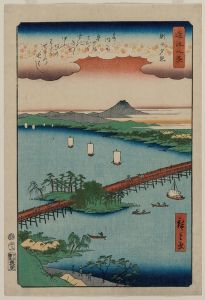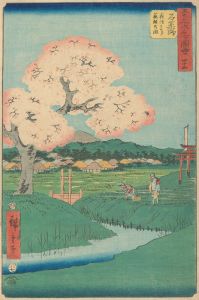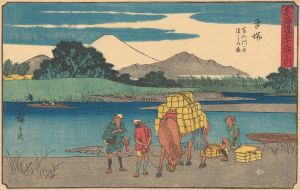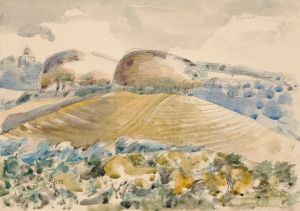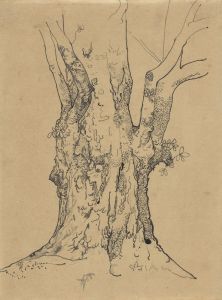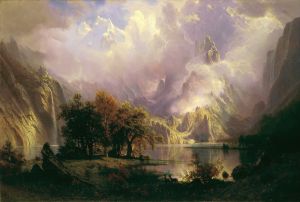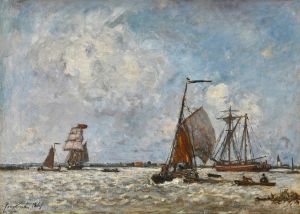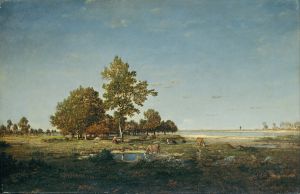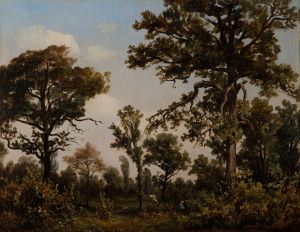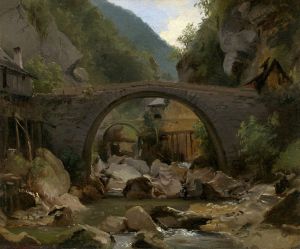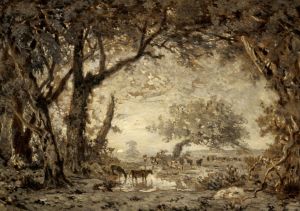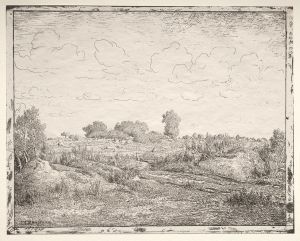
After the Rain
A hand-painted replica of Théodore Rousseau’s masterpiece After the Rain, meticulously crafted by professional artists to capture the true essence of the original. Each piece is created with museum-quality canvas and rare mineral pigments, carefully painted by experienced artists with delicate brushstrokes and rich, layered colors to perfectly recreate the texture of the original artwork. Unlike machine-printed reproductions, this hand-painted version brings the painting to life, infused with the artist’s emotions and skill in every stroke. Whether for personal collection or home decoration, it instantly elevates the artistic atmosphere of any space.
After the Rain is a painting by the French artist Théodore Rousseau, who was a prominent figure in the Barbizon School, a movement that emphasized naturalism and the depiction of rural landscapes. Rousseau was born on April 15, 1812, in Paris, France, and he became known for his detailed and atmospheric landscapes that often captured the serene and unspoiled beauty of the French countryside.
The painting "After the Rain" exemplifies Rousseau's dedication to portraying the natural world with a keen eye for detail and a deep appreciation for the effects of light and weather. Although the exact date of the painting is not definitively known, it is believed to have been created during the mid-19th century, a period when Rousseau was actively producing some of his most significant works.
In "After the Rain," Rousseau captures the tranquil aftermath of a rainstorm in a rural setting. The scene is characterized by lush greenery, wet foliage, and the soft, diffused light that often follows a rain shower. The ground appears damp, and the sky is clearing, suggesting that the storm has just passed. Rousseau's use of color and light in this painting is particularly noteworthy; he employs a palette of greens, browns, and grays to convey the freshness and renewal that rain brings to the landscape.
Rousseau's technique in "After the Rain" reflects his meticulous approach to painting. He often worked en plein air, or outdoors, to observe and capture the natural environment directly. This method allowed him to achieve a high level of realism and to convey the transient effects of weather and light with great fidelity. The texture of the foliage, the reflections in the puddles, and the overall atmosphere of the scene are rendered with a delicate touch that highlights Rousseau's skill as a landscape painter.
The Barbizon School, to which Rousseau belonged, was named after the village of Barbizon near the Forest of Fontainebleau, where many of the movement's artists gathered to work and share ideas. The school was part of a broader trend in 19th-century art that sought to move away from the idealized landscapes of earlier periods and towards a more truthful representation of nature. Rousseau, along with other members of the Barbizon School, such as Jean-François Millet and Camille Corot, played a crucial role in this shift.
"After the Rain" is a testament to Rousseau's ability to capture the essence of the natural world and to convey the peaceful and restorative qualities of the countryside. His work has been influential in the development of landscape painting and continues to be celebrated for its beauty and technical mastery.
Théodore Rousseau's contributions to art were recognized during his lifetime, and he exhibited his works at the Salon, the official art exhibition of the Académie des Beaux-Arts in Paris. Despite facing initial resistance from the academic establishment, Rousseau's talent eventually earned him acclaim and respect.
Today, "After the Rain" and other works by Rousseau can be found in major art museums and collections around the world, where they continue to be admired for their beauty and their insightful portrayal of the natural world. Rousseau's legacy as a master landscape painter endures, and his works remain a source of inspiration for artists and art lovers alike.





